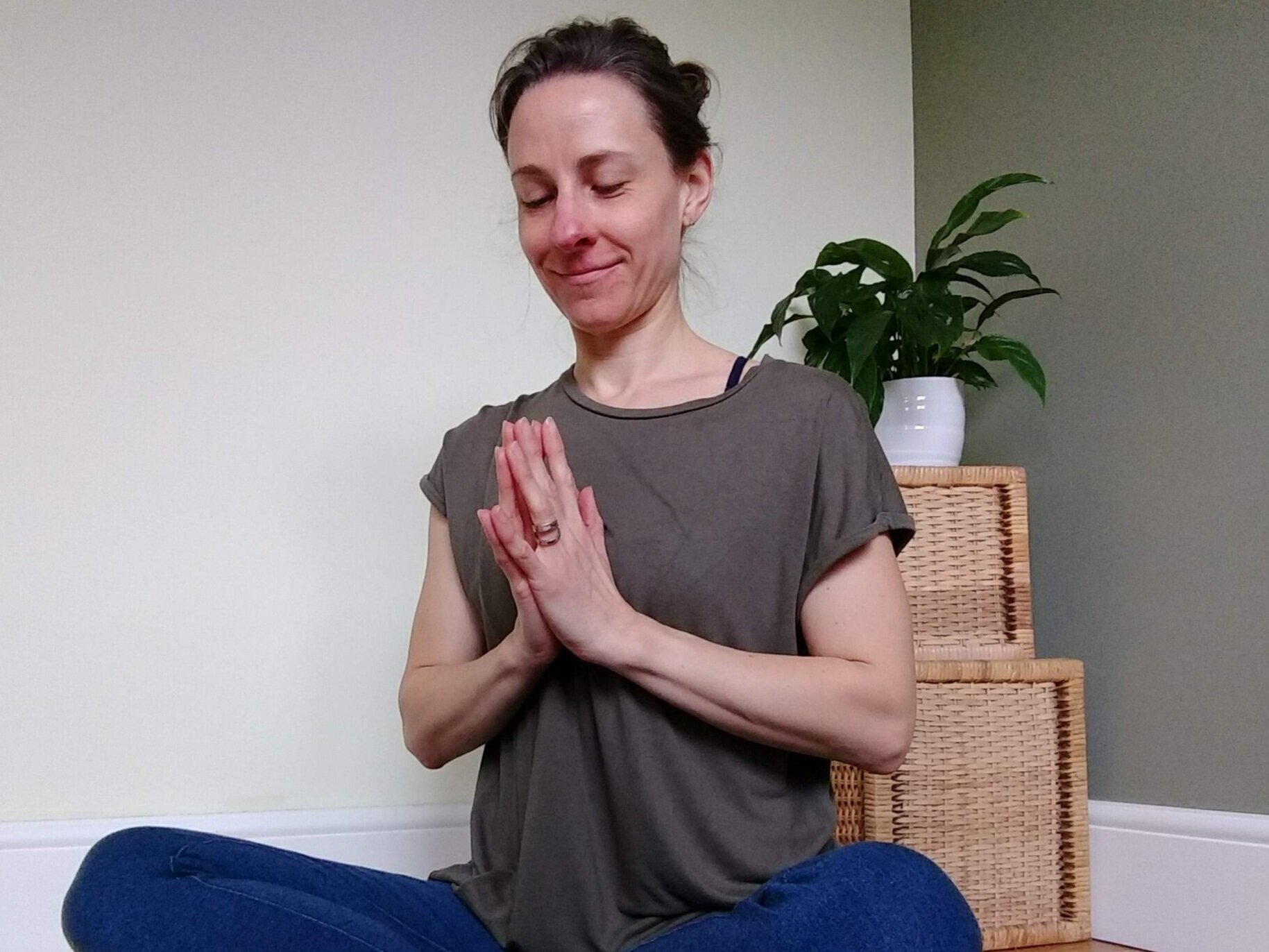Anjali Mudra and the meaning of Namaste
One of the things I most love about the yoga classes that I teach, is the sense of community (‘Sangha’ in Buddhist and yoga traditions) between my students. When a new student joins they are welcomed not just by me but by students in the room, making them feel comfortable at their first class which can be a daunting situation.
At this time of year celebrating ‘love’ I’d like take a moment to celebrate my student community – they welcome each other every week with smiles and hellos, they help each other to find props or even where the bathroom is, they get to know each other and some become close friends through my classes. My pre and postnatal classes provide support to new mums, and mums to be, at a time of huge change and emotion, often these classes create lasting friendships, supporting both new mums and their babies. Love is not only a wonderful side effect of teaching yoga, it is my intention as a teacher.
Every week we bring our hands together at our hearts and say “Namaste” to end the class. It is a gesture to close the class and to enable our class community to thank each other for our practice together. Like all aspects of our yoga practice there is much to study, learn and enjoy in these simple practices as part of our yoga journey. There are deeper meanings to these gestures which I share with you here.
Anjali Mudra – prayer hands at the heart
In Sanskrit, mudra means "seal" or "sign" and refers not only to sacred hand gestures but also whole body positions that elicit a certain inner state or symbolize a particular meaning (1). Anjali mudra is but one of thousands of types of mudras that are used in Indian day to day life, rituals, classical dance, and yoga.
Anjali Mudra is the bringing of the palms and fingers together in front of the heart in the West is often recognised as a gesture of prayer. Anjali Mudra is said to symbolise several things including:
joining the two sides of the body together at the centre of the heart
initiating or completing an action
composure - bringing your awareness back to your heart centre
saying hello or goodbye
coming to a place of contemplation or perhaps meditation
a gesture of love and respect and equality
The heart is the space that in yoga we come back to time and again as the place where our inner light resides, the place which connects us to ourselves but also to others. It is also the location of the Anahata chakra (or energy centre).
“This gesture signifies the potential for an intention to progress to greatest spiritual awakening. When done properly the palms are not flat against each other; the knuckles at the base of the fingers are bent a little, creating space between the palms and fingers of the two hands resembling a flower yet to open, symbolizing the opening of our hearts” Krishnamacharya (2)
As Barrie Risman says, “Anjali mudra is a gesture of honoring, reverence, and loving connection. We can direct it toward others, as in greeting someone with Namaste or Namaskar. But we can also direct the energy of Anjali mudra toward ourselves. In this way it becomes a simple practice of self-honoring.”
Next time you make this gesture, know that you are honouring yourself and those around you with love.
The meaning of Namaste
Namaste is used as a greeting of respect in daily life in India, it often accompanies palms together in Anjali Mudra or palms together at the third eye – and in fact the gesture alone can portray the greeting without Namaste being spoken.
Like all Sanskrit words there is no direct translation into English and so there are many meanings behind Namaste.
The most simple meaning is as follows ‘Nama’ means bow, ‘as’ means I, and ‘te’ means you. Therefore, "I bow to you."
Others are:
The divine light in me bows to the divine light within you.
I honour the place in you where the entire universe dwells.
I bow to the place in you that is love, light, and joy.
When you and I bow to our true nature, we are one.
My soul recognises your soul.
We are the same, we are one.
I honor the place in you that is the same as it is in me.
Namasté represents the idea that all are one. It affirms that beneath the outer trappings that make you appear different from others, you are made of the same stuff. You are more the same than you are different. (3)
When used as a deeper spiritual practice, Namaste helps us to make a heartfelt recognition that not only are we all the same and equal, it reminds us to let go of the ego and any feelings of being more or less than any other. When the ego kicks in with I, me or mine, this is when we lose our sense of satisfaction and peace and we cause ourselves unnecessary suffering. This is a key teaching of yoga.
A namasté between two yogis is a pact made to honor the highest, truest, most authentic parts of themselves, and let their limitations fall away. (4)
The next time you make bring your hands to your heart in Anjali Mudra and say Namaste, at the end of class, you can be sure that you are making a wonderful connection to yourself and to those around you, honouring your highest self, and giving deep respect, thanks and love to all those around you. Bringing us all to a recognition that through our strengths and limitations we ultimately come to a place of being at one.
(1) https://www.yogajournal.com/yoga-101/for-beginners-anjali-mudra
(2) https://www.bodhisurfyoga.com/meaning-of-anjali-mudra
(3) Karson McGinley https://chopra.com/articles/learn-the-meaning-of-namaste
(4 Karson McGinley https://chopra.com/articles/learn-the-meaning-of-namaste

